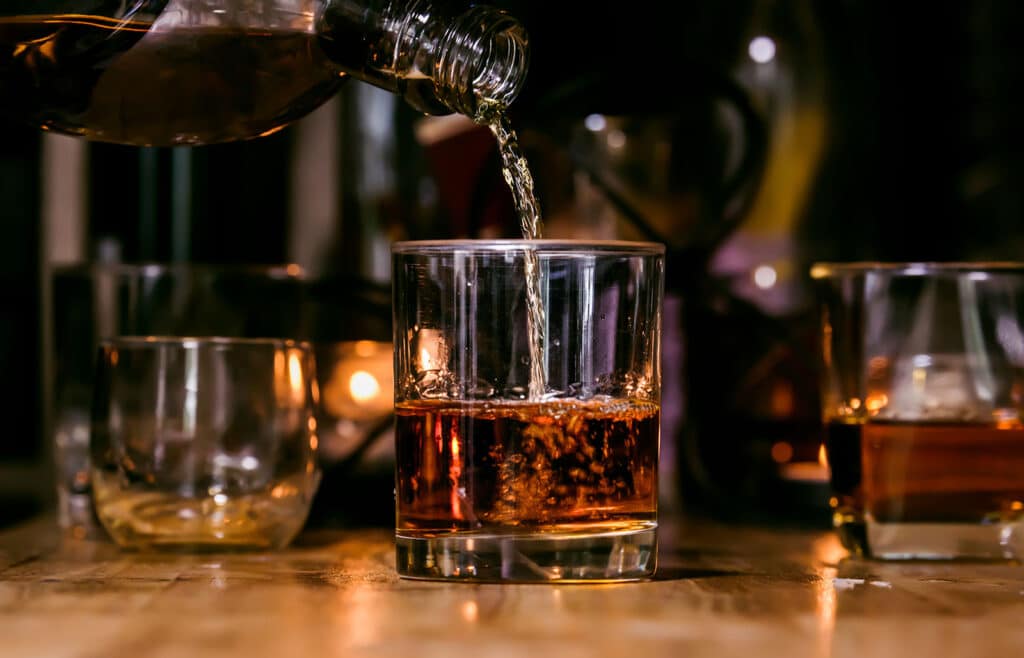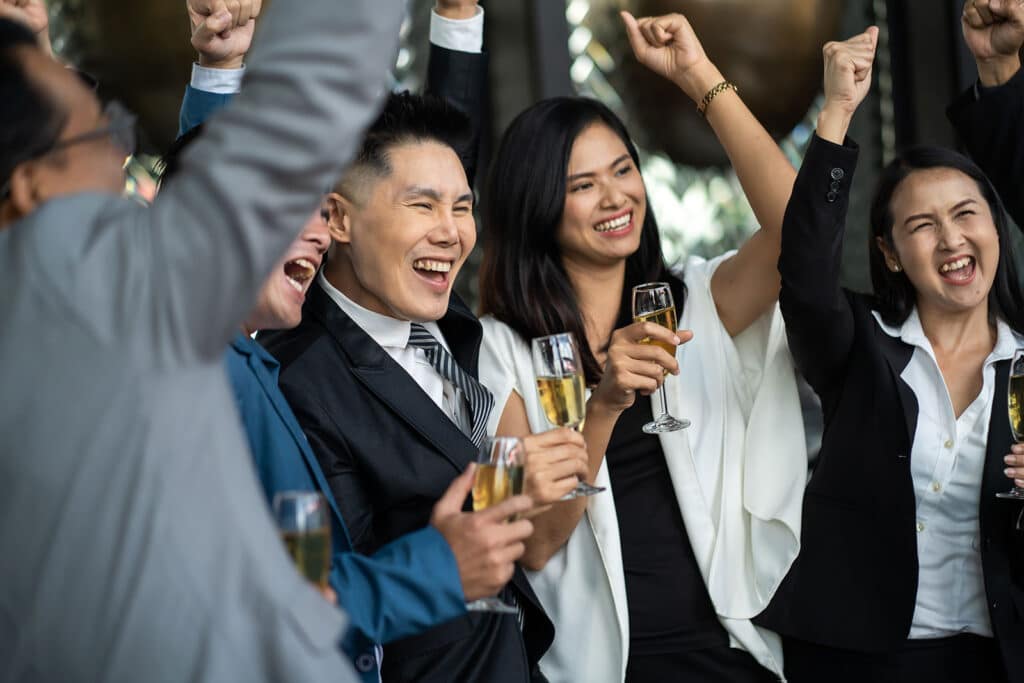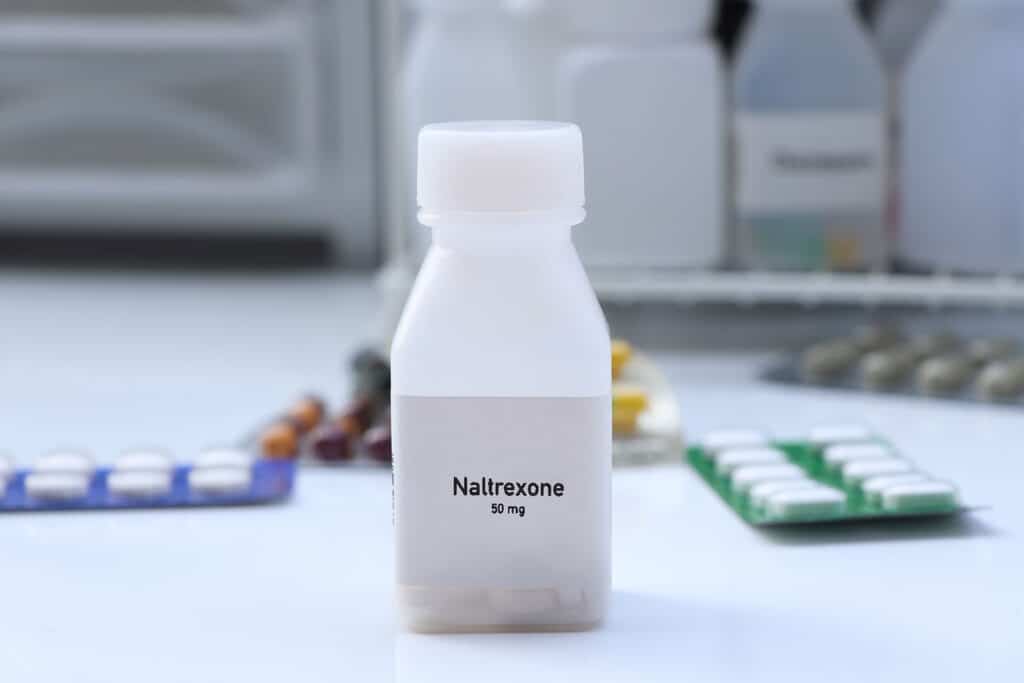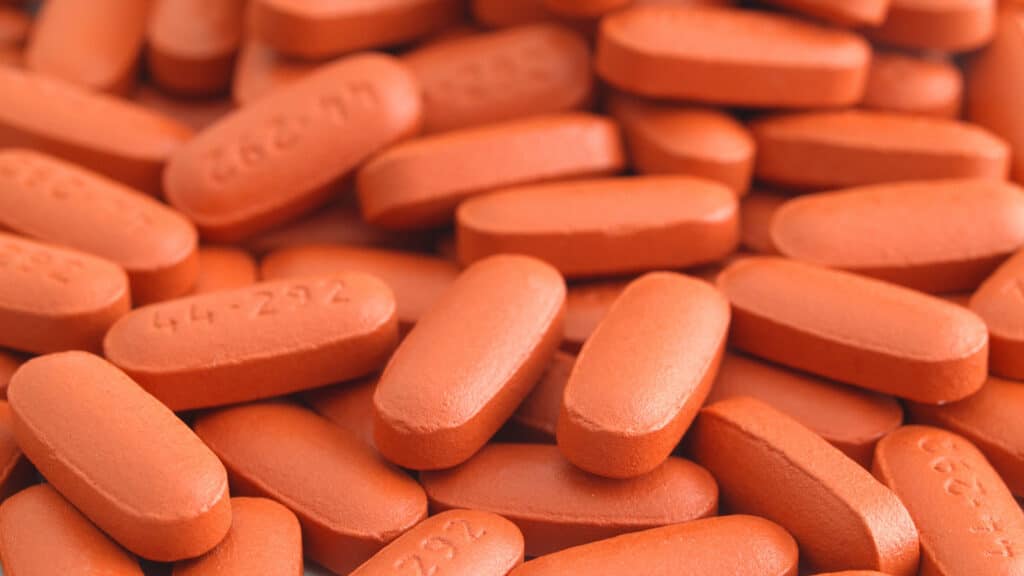In Records of the Grand Historian, the scribe Sima Qian tells the story of Yi Di, the brewer who gave the first alcoholic drink, a mellow wine made from glutinous rice, to the emperor, Yu the Great, in 2100 CE. Another version of the tale names Yi Di as Yu’s wife. Du Kang, an official who lived during the Xia Dynasty, was famed for making a strong drink out of sorghum beans before 1600 CE. Today, anthropologists say that the Chinese had been drinking for thousands of years before recording their history, after discovering a piece of 9,000-year-old Neolithic pottery at Jiahu in the Yellow River Valley of China that holds evidence of fermentation. Its residue, which contains traces of alcohol made from rice, grapes, honey, and hawthorn, could be the remains of the earliest alcoholic beverage known to exist.
How Alcohol Has Influenced Chinese Society
In Chinese society, everyone from emperors to workers has celebrated victories and marriages, honored ancestors and gods, and treated illnesses with alcohol. For centuries, alcohol has symbolized a happy, prosperous life. It’s also inspired artists, so much so that the poet Li Bai is called the “saint of alcohol.” In modern times, potent liquors are still served with meals, especially at dinners or banquets when people meet for the first time, have a reunion, commemorate an elder’s birthday, or partner in business. At nearly every important ceremony, hosts and guests consume alcohol to show joy and respect.
The History of Chinese Drinking Culture
To understand Chinese drinking culture, it can be helpful to explore the history, customs, and significance of its related customs.

Ancient Traditions
Alcohol has such ancient roots that the Chinese call it the “water of history.” As long as the “shi,” or scribes, have written the stories of their people, there have been records of various kinds of alcoholic beverages, with the first notes about the libation appearing about 3200 years ago during the Shang dynasty.
In the olden days, the Chinese believed that alcohol was a sacred elixir and reserved it for making sacrificial offerings to the heavens, the earth, and their ancestors. During the Zhou dynasty, alcohol was enshrined in Confucian law in the Nine Rites and played a key role in the ceremony of kingship. Every dynasty created special ministries to oversee alcohol production and banqueting. Eventually, alcohol became available to everyone, and customs evolved to accommodate daily life.
The Role of Alcohol in Ancient Chinese Rituals and Ceremonies
Thousands of years ago, the Chinese drank to open a window to the spirit world and go beyond reality to speak with their gods and their ancestors. Alcohol also played a part in political ceremonies and feasts from the beginning of the dynastic times and served to legitimize emperors and elites. Rituals and etiquette were enmeshed with communal drinking, helping to build relationships and social networks while sustaining elite power during times of turmoil.
The Evolution of Drinking Over Time
The prehistoric Chinese toasted their gods and spirits to establish their place in the cosmos. Eventually, as the area became more secular and populous, alcohol became more widespread and a means of making alliances. Elaborate customs took hold, which governed the nuances of drinking, and violations could be punished by death. A misstep with alcohol could lead to diplomatic disaster; giving bad wine to a rival could lead to war.

Between 5000 and 1000 BCE, alcohol played a role in shaping civilization, and emperors installed court brewers to make a variety of drinks used in rituals and political meetings. During this time, a fermented grain alcohol called “jiu” became prevalent.
From 1 to 1000 CE, as China expanded its empire, huangjiu, a sweet grain wine, became the drink of choice for the Han, Tang, and Song dynasties. Huangjiu made its way into the mouths of painters and poets like Li Bai, who drank alone to commune with the shadows and the moon. Philosophers argued over the merits of alcohol, with Confucianists suggesting moderation, while Daoists drink to reach enlightenment through drunkenness.
In the 1200s, legend has it that Genghis Khan brought distillation to China from the Middle East. Some archeologists believe that traders brought stills to China even earlier. During the Ming Dynasty, Chinese spirits were likely to be modeled after Middle Eastern arak, and brewers transformed huangjiu into a stronger drink called shaojiu, or “burnt wine,” which is now called baijiu. Many historians believe that distillers mastered their craft between the Southern Song and Yuan dynasties.
In the mid-1600s, baijiu became the drink of the everyman and inspired the creation of many unique varieties. While the elites continue to drink huangjiu made the traditional way, the countrymen prefer the potency of baijiu. At the same time, the empire was so vast that it’s likely that the drinking habits of commoners also influenced the elites. In the 1700s, during the Qing dynasty, drinking became so popular that the emperor tried to ban liquor consumption during his reign.

Types of Alcohol in China
As time passed, the Chinese developed several unique types of alcohol, including the high-proof spirit baijiu and the less potent huangjiu.
Baijiu
Baijiu, or “shaojiu,” is a distilled white spirit that people often mistakenly call wine. It’s usually about 40-60% alcohol by volume, or 80 to 120 proof, and is commonly served formally and informally during meals, celebrations, and get-togethers. Centuries ago, as settlers began farming in the Yellow River valley, they made baijiu out of the grain they grew.
Baijiu can be an acquired taste, reminding some people of diesel or rubbing alcohol. The six different types of baijiu differ according to their fragrance. “Mao xiang,” or “sauce” fragrance baijiu, can smell like solvent and ammonia, but people who appreciate its flavor enjoy drinking it with pickled and preserved and pickled foods. Thick baijiu is sweet tasting, oily and mellow, and carries the scent of ethyl acetate. Other types include light, rice, honey, and layered fragrance baijiu. Famous varieties include fen jiu, the original white sorghum liquor from the Northern and Southern Dynasties dating to 550 BCE. Zhu Ye, Qing Mao Tai, Gao Liang, Wu Jia Pi Jiu, and many more varieties are also well-known. Some varieties infuse medicinal ingredients into the liquor or include rice or wheat as a base.

Huangjiu (Yellow Wine)
Huangjiu is a more mellow alcoholic beverage containing less than 20% alcohol that can be classified according to the region it comes from. Daizhou, Jinhua, Shaoxing, and Shandong yellow wine are common varieties that are traditionally pasteurized, then aged and filtered before they are bottled. Huangjiu ranges in color from clear to yellowish- or reddish-brown. It can be classified into five categories of sweetness: dry, semi-dry, semi-sweet, sweet, and extra-sweet.
Popular varieties of huangjiu include Danyang yellow wine, which is usually brewed with rice, millet, or wheat and often used in Chinese traditional medicine. Miji is a clear, fermented rice wine that is similar to sake and used for cooking and drinking and cooking. Fujian is an orange-red wine made with glutinous rice and medicinal herbs. Huadiao jiu, a reddish wine made from glutinous rice and wheat, comes from Shaoxing and is a traditional wedding gift. Higher-grade Shaoxing wines are frequently used for cooking and drinking.

Beer and Other Spirits
Though Chinese beer has been around since 7000 BC, rice wine has historically been the most commonly consumed libation. When Russians and Germans established breweries at Harbin and Qingdao in the late 1800s, they started a trend for pale lagers, and soon Chinese beers like Tsingtao, Harbin, and Snow became popular. Beer consumption continued to grow in the 1900s, and today, China is the world’s largest consumer of beer.
Other popular Chinese spirits and fermented beverages include choujiu, lychee wine, gouqi jiu, qingke jiu, and kumis, which are made from a variety of starters, including sticky rice, barley, wolfberries, and mare’s milk.
Although the Chinese have had access to Western distillation techniques since the Tang dynasty, the integration of Western grape wine and foreign distilled spirits into Chinese liquor cabinets is a fairly recent development. Portuguese traders and missionaries brought wine to Macao in the 1500s, and Scotch whisky came to China in the 2000s with the arrival of global trade. Gin, bourbon, and various cocktails are also popular with Chinese drinkers.

Social Customs and Etiquette
It’s impossible to understand Chinese drinking culture without some knowledge of the customs and etiquette that define it. Exploring the tradition of “ganbei” and the importance of paying respect while drinking can help make these practices seem more familiar.
Ganbei (Bottoms Up)
In China people commonly drink together to build friendships. “Ganbei,” which literally translates to ”bottoms up” or “empty cup,” is a way for friends and family members to say “cheers” and encourage each other to swallow every drop.
When someone toasts “ganbei,” at minimum, guests should sip the drink. Though no one is required to finish their drink, doing so is encouraged because it is believed to show sincerity. People must find a balance between consuming responsibly and drinking large amounts to show trust in their friends and gratitude towards their host. Being able to drink continuously and hold one’s liquor is greatly admired.
Chinese Drinking Etiquette
When a meal or celebration begins, no one should drink until the host raises a toast; the idea is that everyone will wait to start at the same time. The first toast is usually made with an empty cup held in the right hand to show respect before the celebration begins. People do their best to hold their cups lower than the cups of people of high rank. Both hands are used to offer or receive a glass of alcohol.
Chinese etiquette requires that guests’ glasses stay full, and it’s customary for people to fill up each other’s glasses completely whenever a toast is made or a glass is emptied. Younger drinkers are expected to refill the glasses of older or higher-ranking companions, but this is less strictly observed when friends are celebrating informally.
Since alcohol plays such a large role in Chinese social interactions, it’s important to be aware of cultural norms and know how to politely decline a drink. It’s better for guests to set boundaries when the meal starts rather than once the celebration is underway. A guest can say “wǒ jiǔliàng bùhǎo” to express a low tolerance for alcohol, give a reasonable excuse, or cover their cup with their hand to stop someone from refilling it.
It’s also not acceptable to appear extremely drunk, although no one is expected to stay sober. “Saving face” and protecting one’s reputation always applies in Chinese culture. Sometimes, it’s okay to drink a lighter Chinese beer or wine instead of liquor, or have a friend drink a toast on your behalf.
The key to drinking socially is for guests to stay tactful and stick to their limits without offending their host or companions. It’s important for guests to show that they value hospitality, connection, and celebration.

The Importance of Alcohol in Business and Diplomatic Interactions
Drinking alcohol is a normal part of Chinese professional culture. At social functions like banquets, client dinners, and networking events, drinking is expected, because it’s believed that it fosters connection, trust, strong relationships, and respect. Since so much drinking goes on at corporate events, companies will often hire special employees or designate juniors to stand in and drink for their superiors. These parties and dinners also give lower-ranking employees a chance to network and rise on the corporate ladder.
The Role of Alcohol in Celebrations
In China, alcohol is part of every festival and family celebration, especially during times of good harvest. It must be offered to spirits and ancestors and consumed at weddings and holidays, where people will raise a glass to wealth, happiness, and everlasting friendships. Each holiday is associated with a particular drink; for instance, you should drink sweet sedge wine during the Dragon Boat Festival, chrysanthemum wine during the Double Nine Festival, and niánjiǔ at the Spring Festival that celebrates the Chinese New Year.
The New Year’s Eve reunion dinner is the most important event of the year. Every house will serve wine, and everyone will take a sip to protect them from bad luck, and most people will continue drinking until midnight.
Contemporary Drinking Trends in China
Since China opened its doors to the West in 1978, the Chinese have been broadly introduced to the influence of Western drinking habits and culture. They have come to understand that in the West, the focus of drinking alcohol tends to be more about appreciating the beverage itself in intimate settings and less about using alcohol to facilitate business and social relationships. On the other hand, the Chinese are becoming greatly interested in consuming European wines and whiskeys, and Western-style cocktail bars are becoming very popular. They are also more likely to enjoy alcohol informally to relax or indulge and to appreciate different kinds of alcohol for their unique characteristics.

Health and Social Concerns Related to Excessive Drinking
Although drinking is entrenched in Chinese culture, doctors do have concerns about its effects on public health. Many experts are calling for more moderation and restriction in drinking practices, and recently, China passed its first law barring the sale of alcoholic beverages to anyone under age 18. The government is trying to discourage the work-drinking culture, saying that pressure to drink could lead to unwholesome behavior. Scandals and abuse have dampened some of the enthusiasm for drinking at work; employees have been slapped for refusing to drink at work events, and two female employees reported being sexually assaulted at a work event where everyone was drinking heavily. Many Chinese hope that modernizing the drinking culture will help reduce harm in political, business, and social situations without damaging a tradition that has evolved over thousands of years.
The Future of Chinese Drinking Culture
As China grows into its role as a global economic powerhouse, it is becoming more open to Western alcohols and cultural influences. As a result of robust economic development, the Chinese people are actually consuming more alcohol and engaging in Western habits like drinking to relax. Many people say high-risk drinking behavior has increased dramatically, and the rates of alcohol-related health conditions are also increasing. It’s likely that traditional and modern customs will continue to evolve until Chinese society finds equilibrium, possibly with new and different cultural norms.

Understanding Chinese Drinking Culture Can Open up New Perspectives
The historical, social, and cultural aspects of Chinese drinking culture have evolved over thousands of years and may seem surprising or unusual to Western eyes. At first glance, it may seem that the Chinese have a more relaxed attitude towards alcohol than Westerners, but the truth is much more nuanced, and a high value is placed on self-control. It is important for people who are unfamiliar with Chinese drinking culture to attempt to understand and respect these cultural traditions and engage their friends with openness and respect. Recreate Behavioral Health encourages guests who are new to Chinese drinking culture to know their limits and open their hearts as they explore and appreciate these customs responsibly.











